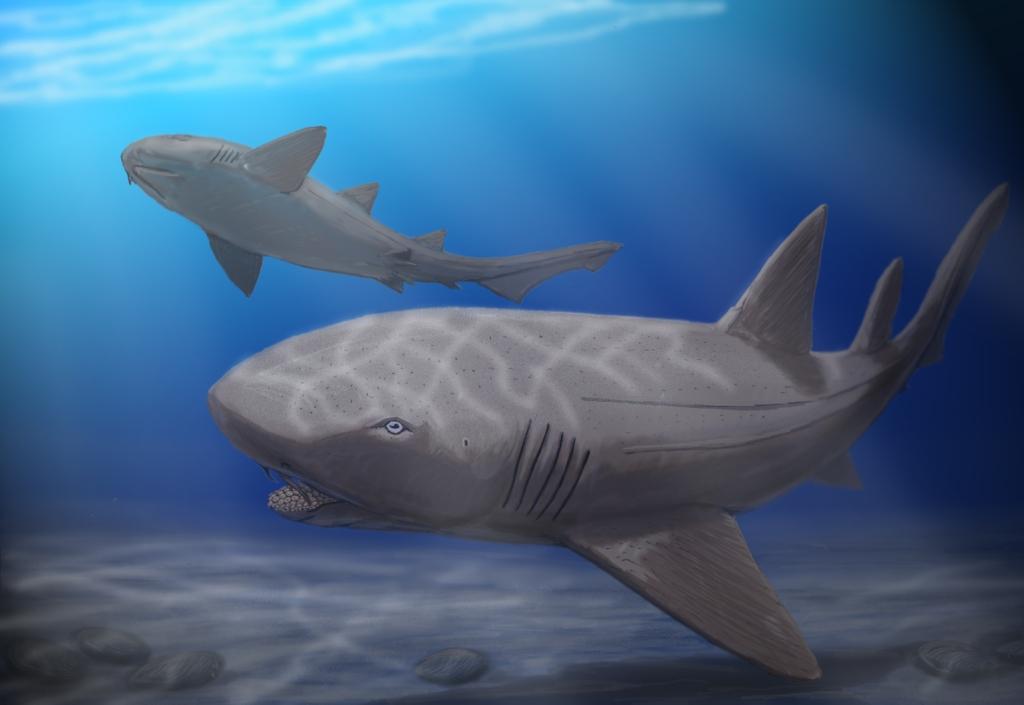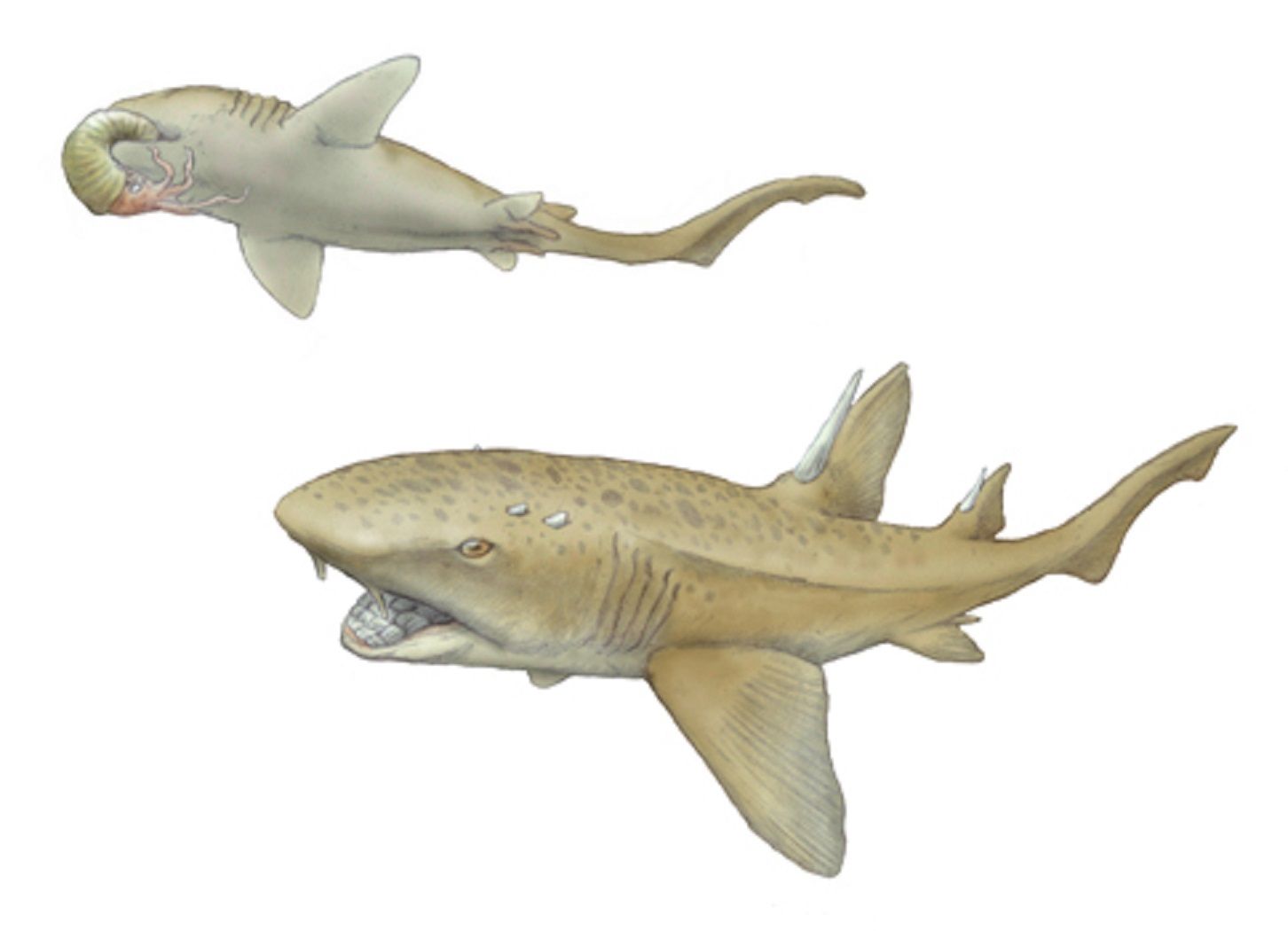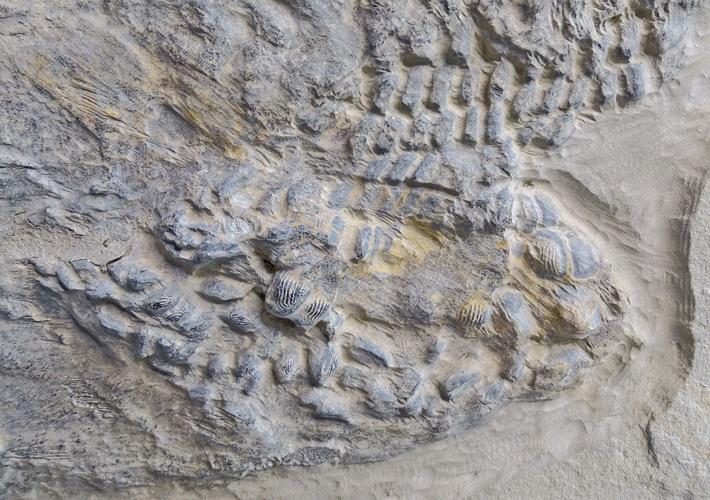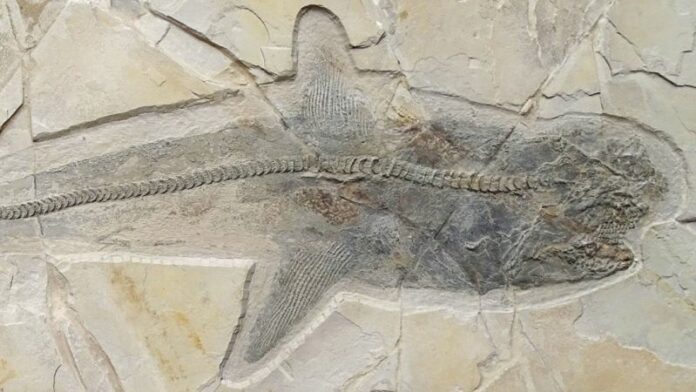In an extraordinary breakthrough, paleontologists have uncovered a nearly complete fossil of an ancient shark, shedding light on the enigmatic predator that swam the seas during the age of dinosaurs. This discovery not only resolves a centuries-long mystery but also provides significant insights into the evolutionary history of sharks.
Unusual Teeth of the Cretaceous Predator

During the Cretaceous Period, a genus of sharks known as Ptychodus roamed the oceans. Unlike the sharp, slicing teeth of many modern sharks, Ptychodus had large, rounded teeth designed for grinding and crushing shelled creatures. These unique chompers indicate a diet that included mollusks and other hard-shelled marine animals.
From Isolated Teeth to Complete Fossil
For centuries, scientists had only isolated teeth to speculate on Ptychodus’ appearance. However, remains recently unearthed from limestone quarries in northeastern Mexico have provided a nearly complete fossil, revealing much about this ancient predator. This remarkable find includes skeletal elements and soft-tissue outlines, offering a clearer picture of Ptychodus’ morphology.
Evolutionary Significance

The newly discovered fossils place Ptychodus within the Lamniformes order, which includes both extinct species like the Otodus megalodon and modern sharks such as the great white. This discovery highlights the evolutionary diversity of sharks, revealing traits previously unknown in mackerel sharks.
Insights into Shark Evolution
Dr. Eduardo Villalobos Segura, a study coauthor, emphasized that the discovery allows scientists to revise previous hypotheses about Ptychodus’ biology and relationships. The preserved fossils from Nuevo León, dating back approximately 93.9 to 91.85 million years, were likely preserved due to stagnant conditions that limited oxygen, thus conserving the soft skeletons.
Fossil Analysis and Findings

Researchers analyzed six fossils from the site, including one nearly complete specimen. The study confirmed that Ptychodus was a member of the Lamniformes group, which also includes modern megamouth, sand, goblin, and basking sharks. The existence of mackerel sharks with crushing teeth was unknown until this discovery, marking a significant step in understanding shark evolution.
Revising Ptychodus’ Lifestyle and Diet
The body outline of Ptychodus suggests it was not a bottom-dweller, as previously thought, but a fast-swimming predator. This new perspective indicates it might have hunted sea turtles and large ammonites, competing with other marine predators of the Late Cretaceous period.
Implications for Shark Size Estimates
The findings suggest that the largest species of Ptychodus may have been slightly smaller than previously estimated, with a maximum length of 9.7 meters (nearly 32 feet). Although smaller than earlier estimates, this size still surpasses that of modern apex predators like the great white shark.
A Unique Shark with Crushing Teeth

The crushing teeth and gigantic size make Ptychodus a unique shark. The fossil record reveals teeth that are massive, polygonal, and almost flat, or with rounded protuberances or pointed cusps, forming massive tooth plates used to crush hard-shelled prey.
Future Research and Discoveries
The new fossil, measuring nearly 1.5 meters (about 5 feet) in length, could represent a younger shark or a different species within the Ptychodus genus. There are currently 22 known species of Ptychodus, but the worn-down teeth of the fossils studied prevented precise identification. Future research aims to uncover more about this ancient shark’s diet and ecological role.
Conclusion
The discovery of a nearly complete Ptychodus fossil is a landmark achievement in paleontology, providing answers to questions that have puzzled scientists for over 180 years. This breakthrough not only enhances our understanding of ancient shark evolution but also challenges our perceptions of prehistoric marine ecosystems. As researchers continue to investigate these remarkable fossils, we can expect even more fascinating insights into the life and times of these ancient ocean giants.
